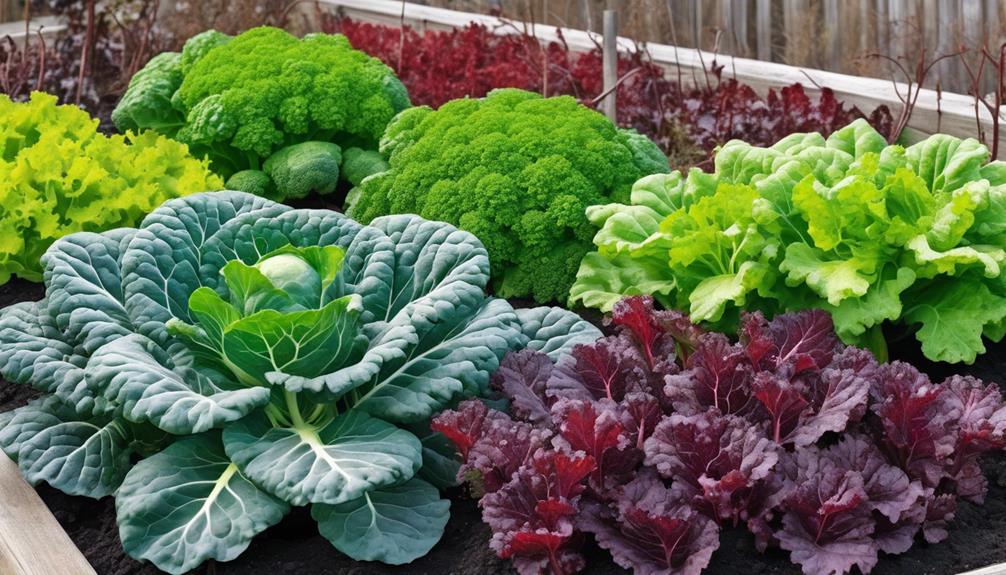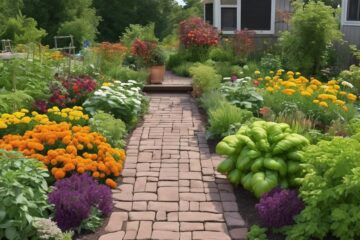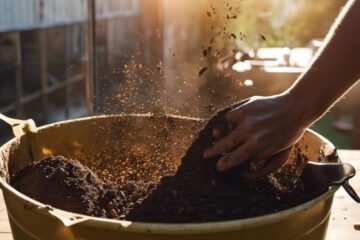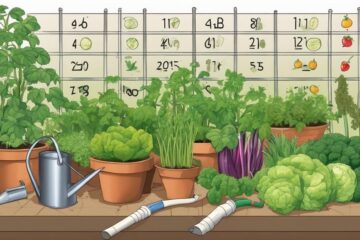Have you ever wondered which vegetables truly thrive in cold weather gardens?
While some may assume that chilly temperatures inhibit plant growth, there is a fascinating array of vegetables that not only withstand the cold but actually thrive in those conditions.
From the robust flavors they develop to the extended growing season they offer, these cold-loving plants can be a rewarding addition to your garden.
But which specific vegetables should you consider planting to make the most of your cold weather garden?
Benefits of Cold Weather Vegetable Gardening
Cold weather vegetable gardening offers numerous advantages for those seeking an extended growing season and flavorful produce. In the cool weather of late summer and early fall, vegetables like Brussels sprouts thrive, producing sweeter and tastier yields.
Brussels sprouts are known to develop a more robust flavor when exposed to cooler temperatures, making them an ideal choice for cold weather gardens. By starting seeds indoors and carefully timing the transplanting of seedlings, you can ensure successful growth of these cold weather crops.
Additionally, staggering the planting of cold weather vegetables allows for a continuous harvest, providing you with a fresh supply of produce throughout the season. Consider these benefits as you plan your cold weather garden to enjoy a bountiful and delicious harvest.
Factors to Consider for Cold Weather Gardening
When planning your cold weather garden, be sure to carefully assess the plant varieties, soil quality, and sunlight exposure as these factors significantly impact your gardening success.
In cold weather gardening, selecting vegetables with high frost tolerance, such as kale, broccoli, and carrots, is crucial for thriving in lower temperatures. Understanding the planting timing according to the frost tolerance of different vegetables is essential for a successful cold weather garden.
Cold-hardy vegetables not only survive but can also improve in taste after exposure to frost. By considering these factors and choosing the right vegetables, you can enjoy fresh produce throughout the winter months, making cold weather gardening a rewarding and sustainable option for your garden.
Top Vegetables for Cold Weather Gardens
Consider planting nutrient-packed broccoli in your cold weather garden for a bountiful fall harvest. Here are some other top vegetables that thrive in cooler temperatures:
- Chinese cabbage: This leafy green is a great addition to cold weather gardens and can withstand winter rains.
- Mustard greens: Known for their spicy flavor, mustard greens are excellent for fall harvests and can add a kick to your dishes.
- Chives: A versatile herb that not only provides a classic onion flavor but also produces edible blooms, making them a valuable addition to your cold weather garden.
These vegetables are well-suited for growing in cold weather and can thrive in your garden even during the chillier months.
Tips for Successful Cold Weather Vegetable Growing
To maximize the success of your cold weather vegetable growing, implementing proper techniques and strategies is essential. When tending to your vegetable garden in cold weather, understanding the frost tolerance of your plants is crucial.
Consider planting cold-hardy vegetables like kale, carrots, and Brussels sprouts, which thrive in colder temperatures. To protect your plants from harsh winter conditions, use covers such as high or low tunnels, row covers, or cloches.
Additionally, mulching with yard debris, cardboard, or newspaper can help warm the soil and provide insulation for your cold weather vegetables. By taking these steps to protect and nurture your plants, you can ensure a bountiful harvest even in chilly conditions.
Common Mistakes to Avoid in Cold Weather Gardening
Avoid the mistake of planting warm-season vegetables in your cold weather garden. These plants aren't suited for colder temperatures and are likely to wither or die before producing any harvest.
Ensure proper spacing between your cold weather vegetables to promote air circulation and prevent fungal diseases. Overcrowding can lead to issues like mold and rot, impacting the overall health of your plants.
Remember to consider the last frost date in your area and protect your crops accordingly. Frost can be detrimental to cold weather vegetables, so using row covers, cloches, or other protective measures can help safeguard your garden.
Prioritize these precautions to maximize the success of your cold weather gardening endeavors.
Frequently Asked Questions
What Vegetables Grow Best in Cold Weather?
You should plant vegetables that grow best in cold weather. Broccoli, cabbage, carrots, and Swiss chard thrive in cooler temperatures. These veggies can handle frost and taste even better after exposure to the cold.
What Temperature Is Too Cold for Vegetable Plants?
When it comes to vegetable plants, temperatures below 28°F to 32°F can spell trouble. Tender veggies like tomatoes and peppers are especially sensitive below 50°F. Keep an eye on the forecast and take precautions to protect your plants.
What Is the Most Cold Tolerant Plant?
When it comes to cold tolerance, kale stands out as one of the hardiest plants. Withstanding frost and even improving in taste, it's a top choice for chilly weather gardens. Give kale a try for a resilient and tasty option.
What Is the Fastest Growing Winter Vegetable?
Radishes are the fastest growing winter vegetable, ready for harvest in as little as 3 to 4 weeks. Varieties like Cherry Belle and French Breakfast can thrive in cold weather gardens. Plant them in well-drained soil for best results.
Conclusion
So, next time you're thinking about giving up on your garden during the colder months, remember this: just like a snowflake that appears delicate but can withstand the harshest of winter storms, cold weather vegetables have the resilience to thrive in frosty conditions.
With the right care and attention, you too can enjoy a winter wonderland of fresh, flavorful produce right in your own backyard.
Don't let the cold weather freeze your gardening dreams – let them flourish!





